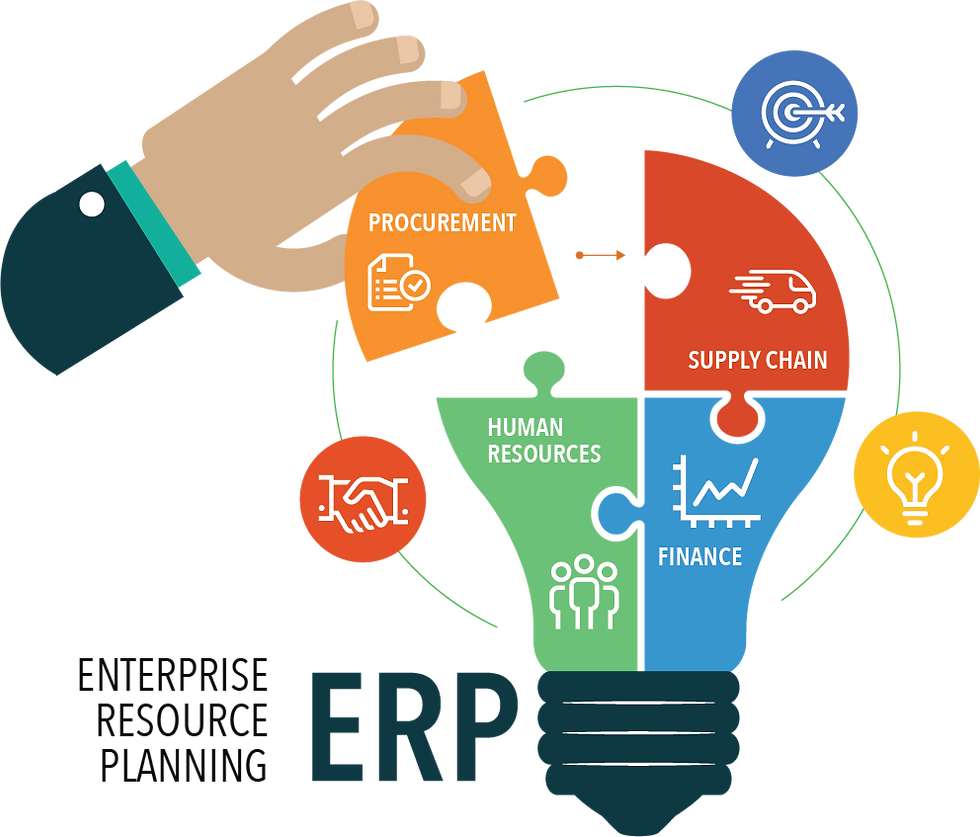Revolutionizing Higher Education with University ERP Software
- solutionscakiweb
- Oct 27, 2023
- 2 min read
Introduction
Universities and educational institutions are increasingly adopting technology to streamline their administrative processes, enhance student experiences, and improve overall efficiency. One of the key technologies driving this transformation is University ERP (Enterprise Resource Planning) software. In this blog post, we will explore the many facets of University ERP software and how it is revolutionizing higher education.
What is University ERP Software?
University ERP software is a comprehensive, integrated system designed to manage and automate the diverse administrative, academic, and financial processes of a university or educational institution. This software streamlines operations by centralizing data and providing real-time access to relevant information, making it easier for staff, faculty, and students to interact with the institution.
Key Features of University ERP Software
Student Management: University ERP software allows institutions to manage student records, including admissions, registration, and grades, in a centralized database. It simplifies the process of tracking student progress and helps institutions make data-driven decisions regarding academic programs and resources.

Finance and Accounting: Financial modules within the ERP system assist in managing budgets, payroll, vendor payments, and more. This automation reduces manual data entry, minimizes errors, and enhances financial transparency.
Human Resources: Universities can use ERP software to manage employee records, payroll, recruitment, and performance evaluations. This helps ensure that staff and faculty are well-supported and allows institutions to make informed HR decisions.
Course Management: Universities can create and manage course schedules, syllabi, and academic calendars using ERP software. Students can access course information, register for classes, and view their progress in real-time.
Library Management: Many University ERP systems offer library management modules to help streamline the cataloging, circulation, and tracking of library resources. This makes it easier for students and faculty to access and manage research materials.
Online Learning: With the growth of online education, University ERP software often includes e-learning modules. These modules facilitate the delivery of online courses, tracking of student progress, and interactive communication between faculty and students.
Analytics and Reporting: ERP systems provide robust reporting and analytics tools, allowing institutions to make data-driven decisions, track key performance indicators, and monitor trends over time.
Benefits of University ERP Software
Improved Efficiency: University ERP software automates time-consuming administrative tasks, reducing the administrative burden on staff and faculty.
Enhanced Student Experience: Students can access real-time information, such as grades and course schedules, through web portals and mobile apps, making their academic journeys more convenient and transparent.
Data Accuracy: Centralized data management minimizes data discrepancies and errors, providing a more accurate view of institutional operations.
Cost Savings: By streamlining processes, reducing paperwork, and minimizing manual data entry, universities can achieve significant cost savings over time.
Regulatory Compliance: ERP systems help universities maintain compliance with various regulations and reporting requirements, reducing the risk of non-compliance penalties.
Better Decision-Making: Real-time access to data and analytics empowers universities to make informed decisions about resource allocation, program improvements, and strategic planning.
Conclusion
University ERP software is revolutionizing higher education by simplifying administrative tasks, enhancing the student experience, and improving the overall efficiency of educational institutions. With the adoption of ERP systems, universities can harness the power of technology to adapt to the evolving landscape of higher education and provide a more seamless and effective educational experience for both staff and students. As universities continue to invest in technology solutions like ERP software, the future of higher education looks brighter and more interconnected than ever.



Comments